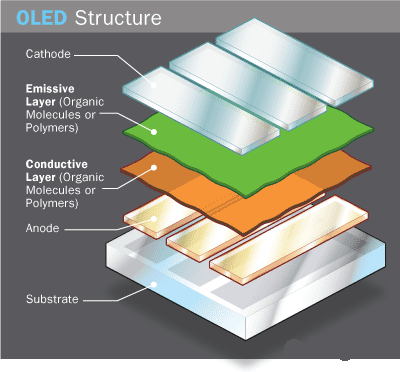I cant wrap my head around the techy part of it but generally this is the gist -
Active Matrix OLED (AMOLED)
- High res, large size
- Anode layers include a Thin-Film transistor (TFT) plane to form a matrix
- Quick refresh rate
Passive Matrix OLED (PMOLED)
- Small screen devices
- Strips of anode and cathode
Inverted OLED
- Bottom cathode
- Low cost OLED
Foldable OLED
- Used in devices that are more likely to break
- Flexible, durable, lightweight
- Connected to clothes, foils, plastics
Top Emitting OLED
- Transistor backplane, not transparent
- Suited to matrix applications like smart cards
Transparent OLED
- Good contrast
- Anode, cathode and substrate are transparent
White OLED
- Brightest light
- Manufactured in large sheets - Cost effective and consume less powerStacked OLED- Uses composite colours- Reduction in pixel gap and increase in colour depth- Used most in TvsFor more info: circuitstoday
There are a bunch of "future" uses, but the guys at Osram see this technology becoming integrated into our homes through luminescent window glass, reflective surfaces like mirrors, tiles or entire flat planes/surfaces etc.
For more info: osram


No comments:
Post a Comment